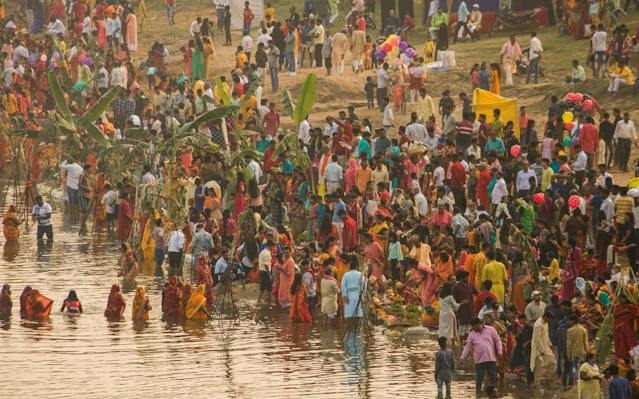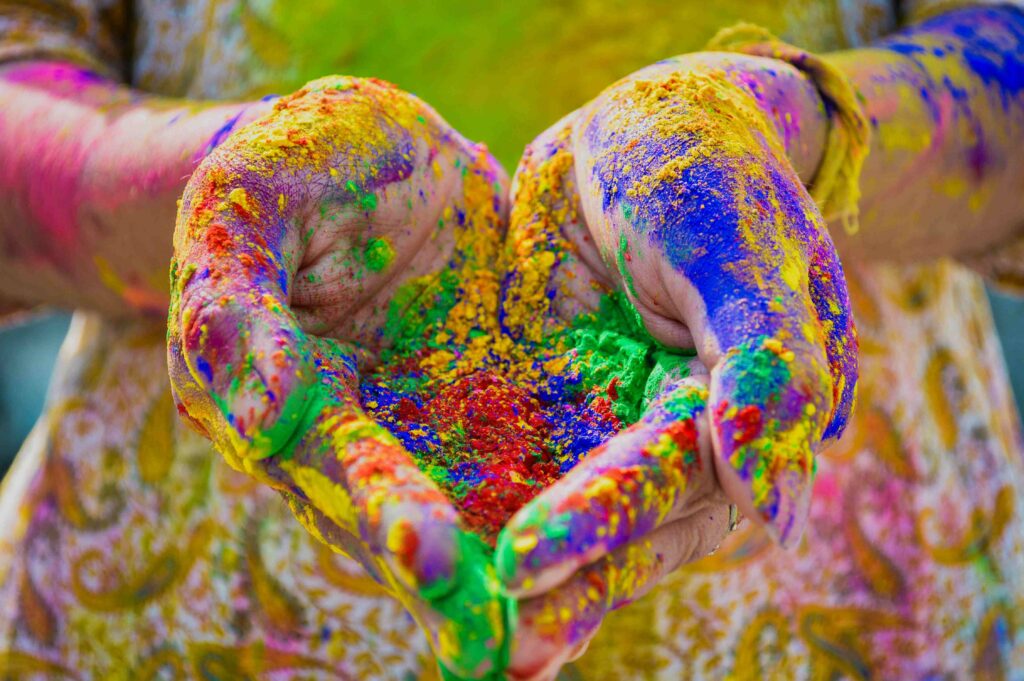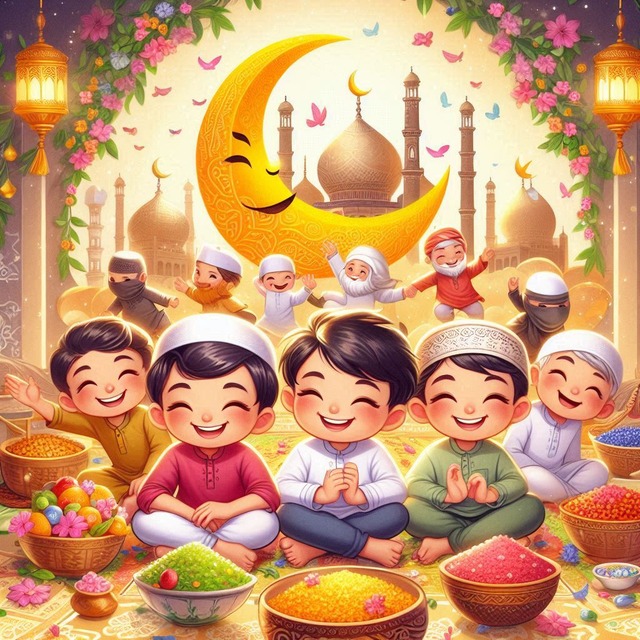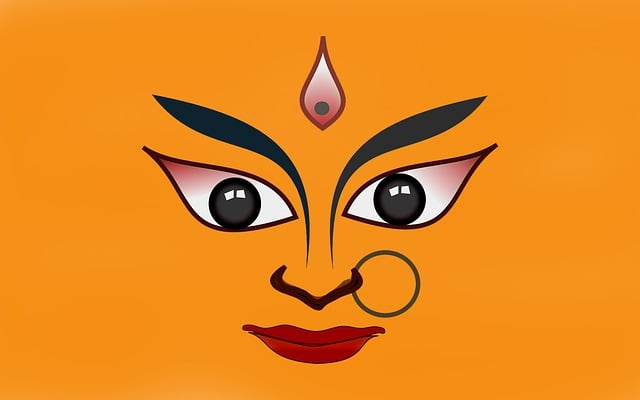Introduction Chhath Puja:
Chhath Puja, a unique and vibrant festival, holds a special place in the hearts of the people of Bihar. Celebrated with unparalleled enthusiasm and fervor, this ancient Hindu festival is dedicated to the worship of the Sun God and is observed with elaborate rituals and customs. Let’s delve into the Story ,Rituals, Scientific Significance And Celebrations that surrounds Chhath Puja in Bihar. This is the only puja in which people worship both during sunrise and sunset.
Significance of Chhath Puja:
Chhath Puja, also known as Surya Shashti, is celebrated on the sixth day after Diwali, usually in October or November. It is one of the oldest Vedic festivals dedicated to the Sun God, Surya, and his sister, Chhathi Maiya. The festival is significant for its spiritual and cultural values, promoting environmental harmony and community bonding.
Mythological Stories of Chhath Festival :
Chhath Puja, deeply rooted in Hindu mythology, is associated with several ancient stories that highlight the significance of this auspicious festival. These mythological narratives add layers of meaning to the rituals performed during Chhath Puja. Here are some prominent stories:
Samudra Manthan (Churning of the Ocean):
According to Hindu mythology, the Samudra Manthan is a crucial event in which both gods and demons joined forces to churn the ocean and extract the nectar of immortality. This elaborate process led to the emergence of various divine beings and valuable gifts from the ocean, among them Usha, the charioteer of the Sun God. Chhath Puja is viewed as a means to convey gratitude to Usha and to seek blessings from the Sun God as a way of honoring this significant event.
The Story of Lord Rama:
In Munger, Bihar, it is believed in religious circles that Mata Sita inaugurated the first Chhath Puja on the banks of the Ganges. This event marked the commencement of the grand Chhath festival, now a major celebration not only in Bihar but also embraced across the nation and beyond its borders. Munger plays a unique role in the Chhath Puja festivities, holding a special place in the hearts of devotees.
Chhath Puja holds particular reverence in Munger, and numerous scriptures emphasize the significance of Mata Sita’s initial Chhath Puja in this region. According to legend, the Babua Ghat on the western bank of the Ganges in Munger still bears the imprint of Mata Sita’s feet to this day. This hallowed ground is adorned with a large stone featuring the footprints of both Lord Rama and Mata Sita, with a grand temple erected at the site, serving as a testament to this divine occurrence. Devotees make pilgrimages to this sacred location to pay their respects to Mata Sita and actively participate in the joyous celebrations of Chhath Puja.
Mata Sita performed Chhath Puja in Munger
According to Valmiki and Anand Ramayana, the historic city of Munger has a significant connection to Mata Sita’s observance of Chhath Puja over six days. After Lord Rama’s return to Ayodhya following the 14-year exile and his decision to perform the Rajasuya Yajna for liberation from the sin of vanquishing Ravana, the sage Mudgala was invited to partake in the ceremony. However, Sage Mudgala insisted that Lord Rama and Sita should attend the yajna at his ashram.
Upon Mudgala Rishi’s guidance, Mata Sita was directed to worship the Sun God, leading her to observe a fast. Lord Rama and Mata Sita then journeyed to Munger, arriving at Mudgala Rishi’s ashram. Following the sage’s instructions, Mata Sita performed the worship of Lord Surya on the banks of the Ganges at Babua Ghat in Munger.
The site where Mata Sita undertook her fast still bears a significant footprint, and a majestic temple has been erected there. Besides the footprints, markings on the stone slab indicate the use of a broom, a ladle, and a vessel. This sacred location serves as a testament to Mata Sita’s Chhath Puja in Munger, upholding the reverence and traditions linked to this age-old celebration.
Draupadi and the Pandavas:
In a well-known legend, Draupadi, the wife of the Pandavas, undertook the observance of Chhath Puja to seek the blessings of the Sun God. Confronting immense adversity and challenges, Draupadi performed the rituals with unwavering devotion. Impressed by her dedication, the Sun God bestowed upon her the power to surmount her difficulties. This tale serves as a symbol of the strength, resilience, and empowerment linked to the observance of Chhath Puja.
Karna and Surya Deva:
Within the Mahabharata, a narrative unfolds about Karna, a pivotal character and a formidable warrior. Karna’s origin traces back to Kunti, the mother of the Pandavas, who invoked the Sun God, Surya, leading to his birth. Karna’s steadfast devotion to Surya resulted in the bestowment of invincible armor and earrings, enhancing his prowess in battle. Chhath Puja is perceived as a moment to pay homage and convey gratitude to Surya Deva, echoing the devotion exhibited by Karna.
These mythological tales imbue the rituals of Chhath Puja with depth and significance, reinforcing themes of devotion, gratitude, and the triumph of good over evil. Rooted in ancient traditions and beliefs, the festival persists as a period of spiritual contemplation and communal celebration in Bihar and other areas where Chhath Puja is honored.
Rituals and Customs Chhath Puja:
Chhath Puja involves a series of rituals that span four days, with each day having its unique significance:
Nahay Khay (Day 1): Devotees take a holy dip in the Ganges or other sacred rivers and observe a fast. The ritual is symbolic of purification and cleansing.
Kharna (Day 2): Devotees observe a day-long fast and break it after sunset, offering kheer (sweetened rice) and fruits to the Sun God. This ritual signifies the preparation for the main day of Chhath Puja.
Sandhya Arghya (Day 3): On the third day, devotees gather at the riverbank or pond during the evening to offer Arghya (offerings) to the setting sun. The offerings include fruits, thekua (a traditional Bihari sweet), and sugarcane.
Usha Arghya (Day 4): On the final day, devotees wake up before sunrise to offer Arghya to the rising sun. This is considered the most important part of Chhath Puja, symbolizing gratitude and seeking blessings for well-being and prosperity.
The Celebrations Chhath Puja:
Chhath Puja is not just a religious event; it is a grand celebration that unites communities and families. The entire state of Bihar comes alive with colorful decorations, traditional music, and the fragrance of incense. Devotees, dressed in traditional attire, gather by the riverbanks or ponds to participate in the rituals.
The vibrant atmosphere is complemented by folk songs, known as Chhath geet, which are sung to express devotion and gratitude. The rhythmic beats of traditional instruments like dholak and tabla add to the festive spirit.
Scientific Significance Chhath festival:
Apart from its spiritual significance, Chhath Puja also holds scientific importance that adds an interesting layer to this ancient festival. Many may not be aware, but there are some fascinating facts that make Chhath even more intriguing!
Chhath Puja Prepares Body For Cosmic Solar Energy Infusion:
According to yogic philosophy, living organisms’ bodies are like energy channels. Direct contact with specific wavelengths of solar radiation leads to the flow of solar bio-electricity in the body. To enhance the functionality of mind and soul, absorbing these energies becomes crucial. Chhath Puja is designed to prepare us for this. The rituals and processes during the festival facilitate the infusion of cosmic solar energy.
Helps In Absorption Of Vitamin D And Calcium:
To operate optimally, our bodies require adequate nutrition. Deficiencies in essential elements like calcium and vitamin D can result in various health issues. While it is crucial to consume foods abundant in these elements, worshiping the Sun during the Kartik month enhances the absorption of vitamin D, a key factor in calcium assimilation. As Chhath is observed during sunrise and sunset, exposure to UVB rays is probable, facilitating this absorption process.
Improves Immunity:
In the contemporary era, maintaining a strong immune system is imperative for safeguarding against viruses and bacteria, a need underscored by the ongoing pandemic. Chhath Puja might also contribute to this goal. The festival’s rituals stimulate blood circulation, bolstering the body’s effective functioning. Offering prayers to the Sun God during sunrise and sunset guarantees optimal energy absorption. Additionally, fasting during Chhath aids in detoxifying the body, enhancing its resilience to combat diseases.
Community Bonding in Chhath:
Chhath Puja emphasizes community participation and mutual cooperation. Families come together to perform the rituals, and neighborhoods transform into lively hubs of celebration. The sense of unity and togetherness is palpable, creating an atmosphere of joy and festivity.
Why is it termed “Maa” when the object of worship in Chhath Puja is actually the Sun (Surya)?
Chhath Puja is a special celebration where we pay homage to the Sun God, Surya. But along with Surya, we also worship Chhathi Maiya, who is considered the sixth form of Durga, known as Katyayni Devi. Chhathi Maiya is worshiped alongside her brother, Lord Sun. Additionally, the two consorts of Lord Sun, Usha and Pratyusha, are also revered during this puja.
The term “Maa” is used because Chhathi Maiya is often regarded as a motherly figure, representing a nurturing and protective energy. In Vedic astrology, it is believed that Chhathi Maiya safeguards children from diseases and difficulties, granting them long and healthy lives. So, while the primary focus is on worshiping the Sun God for its vital role in sustaining life on Earth, the inclusion of Chhathi Maiya in the rituals symbolizes a maternal aspect, ensuring the well-being and protection of children.
Conclusion:
Chhath Puja in Bihar is not just a festival; it’s a cultural phenomenon that showcases the rich heritage and deep-rooted traditions of the region. The four-day celebration is a testimony to the unwavering faith and devotion of the people towards the Sun God, as well as their commitment to environmental sustainability. As the chants of Chhath geet echo along the riverbanks, and the sun rises or sets, one can witness the spirit of Bihar shining bright during this auspicious occasion. Chhath Puja is a beautiful blend of spirituality, tradition, and communal harmony, making it a truly unique and memorable experience for all who partake in its festivities.




